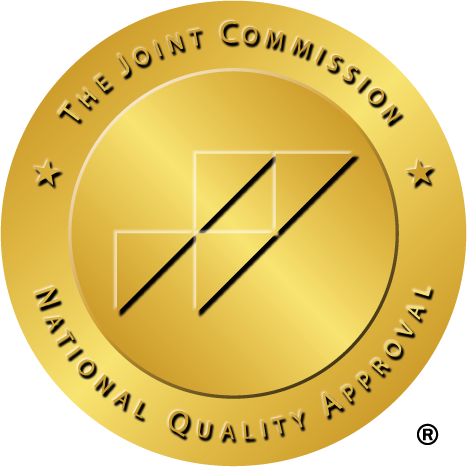KEY POINTS
- Psych drawing tests reveal thoughts and feelings that may be suppressed, and any important components of their emotional state.
- Types of projective drawing tests include House-Person-Tree Test, and the Draw-A-Person-In-The-Rain Test.
- Other psych tests include personality tests, aptitude tests, neuropsychological tests, intelligence tests, and achievement tests.
- Psychologists utilize graphological analysis or apply psychoanalytic concepts such as self-image and ego ideals.
Whenever we express ourselves on paper, through the words we write, or the pictures we draw, our personality traits inevitably make their way into our creative output. We often don’t consciously recognize it, but even the most basic sketches can reveal clues about our emotional state, mental abilities, sense of self-worth, and apprehensions.
Psych drawing tests have been around for years and can be an effective way for clinical psychologists and other mental health professionals to gain a better understanding of their patients. It reveals thoughts and feelings that may be suppressed and any important components of their emotional state. Psych drawing tests may also be used as a part of a larger psych evaluation.
SPEAK WITH AN ADMISSIONS COUNSELOR TODAY
What is the House-Tree-Person Test?
The House-Tree-Person (HTP) test[1] is a valuable tool in clinical psychology for evaluating personality characteristics and identifying potential mental disorders such as schizophrenia. As part of a series of projective tests, the HTP test provides clinicians with valuable insights into a patient’s psyche.
Originally developed to assess children’s intelligence, the House-Tree-Person drawing technique can be traced back to Goodenough’s Draw-a-Man Test in 1926. Drawing and art expression are powerful tools that, when in the right circumstances, can extract sub-conscience emotions and memories, transporting us back to our childhood and the joyful and sometimes traumatic experiences we’ve had.
HTP assessments can be taken by any individual at least three years of age and typically take roughly 150 minutes to complete. Participants are asked to create a drawing, which is later used as a basis for questioning. Typically, crayons are used for the initial drawing and pencils for subsequent phases. Clear and concise instructions, such as “Draw the best house you can,” are provided to the test-taker. After the house drawing is completed, the participant is instructed to draw a tree, followed by a person.
What Is The Draw-A-Person-In-The-Rain Test?
The Draw-A-Person-in-the-Rain Test (DAP-R) is a valuable tool that enhances the Draw-A-Person Test’s efficiency in assessing children and adults. While the DAP-R can be used independently, its main aim is to supplement the findings obtained from other psych drawing tests.
The test is designed to create symbolic stress, which induces subjects to unwittingly reveal their feelings of distress, as well as their defense mechanisms and coping strategies. For example, since rain can symbolize feelings of depression or anxiety, how participants draw individuals undergoing this stress can be quite revealing.
Employing both projective techniques in clinical evaluations and research studies frequently results in valuable insights into the subjects’ personality traits.
How are Projective Drawing Tests Used to Diagnose Individuals?
In order to evaluate a projective drawing test, the examiner may analyze several factors, such as the dimensions of distinct body parts or characteristics, the extent of information provided in the illustration, and the general configuration of the sketch.
In interpreting a drawing, a psychologist may imply that certain elements reflect underlying psychological characteristics. However, it is important to consider the possibility that these elements may simply result from limited artistic abilities.
While psych drawing tests are helpful in giving more context to mental health professionals about “potential” underlying conditions, on their own, they aren’t enough to give a full diagnosis. By combining the results of these tests with other evidence-proven techniques for mental health assessment, psychologists and other mental health professionals can put together a “complete” picture of the individual’s mental and emotional state of mind.
What are Other Types of Psychological Tests?
While psych drawing tests are one of the many tools psychologists use [2] when diagnosing their patients, a variety of other psychological tests are also common. Some of these include:
- Personality Tests – This can include Rorschach testing, Basic Personality Inventory (BPI), and personality questionnaires.
- Aptitude Tests – These tests help to determine how well someone is at a particular skill.
- Neuropsychological Tests – These evaluations help clinicians better understand how an individual’s brain affects their thinking patterns[3], overall skills, and behavior.
- Intelligence Tests – Intelligence tests help to diagnose more than just an individual’s acquired knowledge, but how well they put it into practice through intelligent reasoning.
- Achievement Tests – Similar to intelligence tests, achievement tests help measure the skills and knowledge someone has been able to learn over their life.
Treatment Options for Psychological Disorders
For anyone struggling with mental health conditions, there are a number of effective solutions for treating psychological disorders. Some of these include:
Psychotherapy
Psychotherapy is an evidence-proven type of treatment for individuals battling with different mental health conditions and emotional distress. Not only does this form of therapy address outward-facing symptoms of the condition, but it can also dive deeper into the psychological origins behind them. This type of treatment can prove instrumental in helping individuals live a fuller, more satisfying life.
Prescription Medicine
While prescription medication on its own isn’t enough to address the root cause of psychological disorders, it can be used as an effective tool to reduce symptoms that impede other treatment plans.
Holistic treatments
Individuals who are coping with mental health challenges might get unique benefits from alternative therapeutic methods. These can include acupuncture, hypnotherapy, meditation, yoga, and relaxation therapy.
Residential Treatment Program
A psychiatric residential treatment center can be a pivotal point for families dealing with mental illness. Treatment centers ensure that residents are viewed as valued members of the community, not just patients or cases. Residents have access to various resources and programs that help them successfully change their lifestyle, allowing them to focus on their wellness goals while surrounded by professional staff and peers who empathize with their experiences.
SPEAK WITH AN ADMISSIONS COUNSELOR TODAY
Psych Test Drawing FAQs
The utilization of figure drawings in psychological assessments is a projective diagnostic technique that evaluates an individual’s cognitive, interpersonal, or psychological functioning through their depictions of a person, object, or situation. This falls under the category of a projective test, where an individual gives responses to a series of ambiguous or abstract stimuli like unexplained pictures or ink blots.
The Goodenough-Harris Draw-a-Person test (DAP) is a projective psychological assessment tool that enables individuals to create illustrations of human figures. This widely recognized evaluation assesses the personality and cognitive abilities of children and adolescents for various reasons but is frequently used in psychological assessments as well.
Interpreting drawings is a complicated process that involves different mental health approaches. Psychologists utilize graphological analysis or apply psychoanalytic concepts such as self-image and ego ideals. Despite the different methods used, most examiners prefer a more individualized approach based on clinical experience when diagnosing patients.
Yes. They are non-invasive and can be used for anyone who is old enough to know how to draw and take basic instruction.
While psych drawing test’s like House-Person-Tree (HPT) and Draw-A-Person-in-the-Rain Test (DAP-R) can be used by trained psychologists as a tool when diagnosing their patients, these types of tests on their own are not enough to fully diagnose a mental disorder. Rather, they can be used in combination with other proven methods.
Explore Psychological Testing for Mental Health Conditions
Here at New Waters Recovery, we use a variety of evidence-supported psychological assessments and treatment options to help you get the help you need. Our experts conduct thorough assessments that provide an in-depth understanding of each individual’s psychological well-being, and develop personalized treatment plans to give them the best support system possible while undergoing treatment. If you are looking for psychological testing in Raleigh, NC, get in touch with our admissions team!
Call Now
Related Topics
Sources
[1] Sheng, L., Yang, G., Pan, Q., Xia, C., & Zhao, L. (2019, March 26). Synthetic House-tree-person drawing test: A new method for screening anxiety in cancer patients. Journal of oncology. https://www.ncbi.nlm.nih.gov/pmc/articles/PMC6457292/ on May 14, 2023
[2] Frequently Performed Psychological Tests. National Library of Medicine. (n.d.). https://www.ncbi.nlm.nih.gov/books/NBK321/ on May 14, 2023
[3] Neuropsychological Assessment. National Library of Medicine. (n.d.-b). https://www.ncbi.nlm.nih.gov/books/NBK513310/ on May 14, 2023


